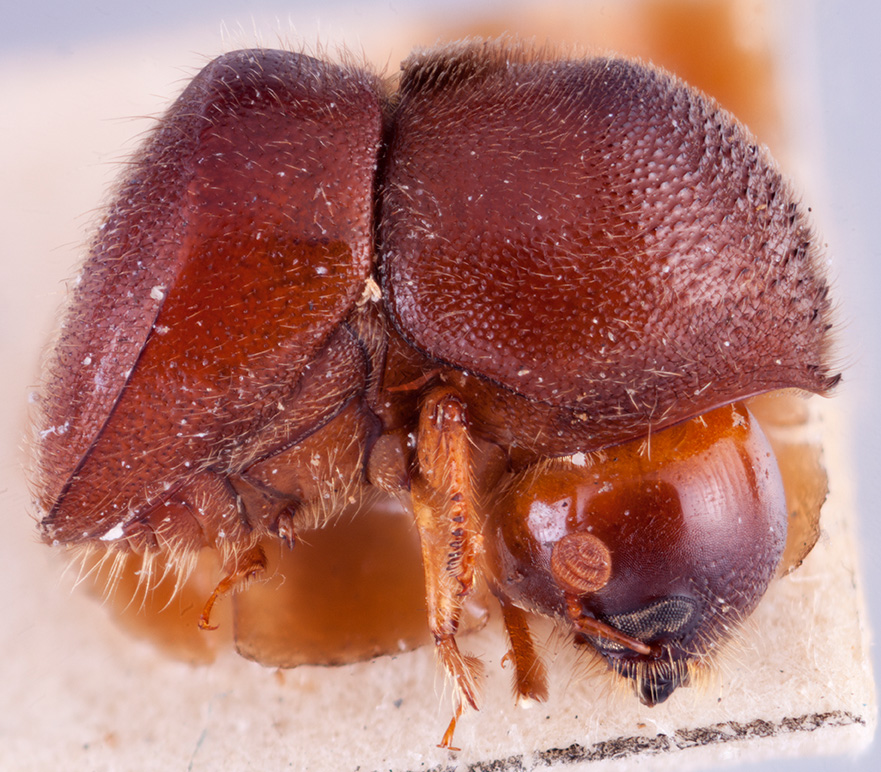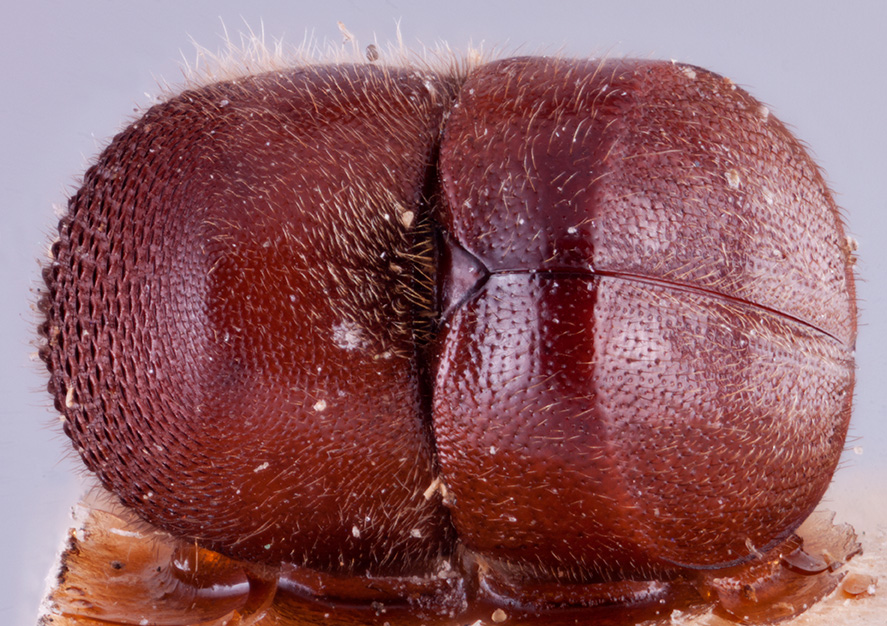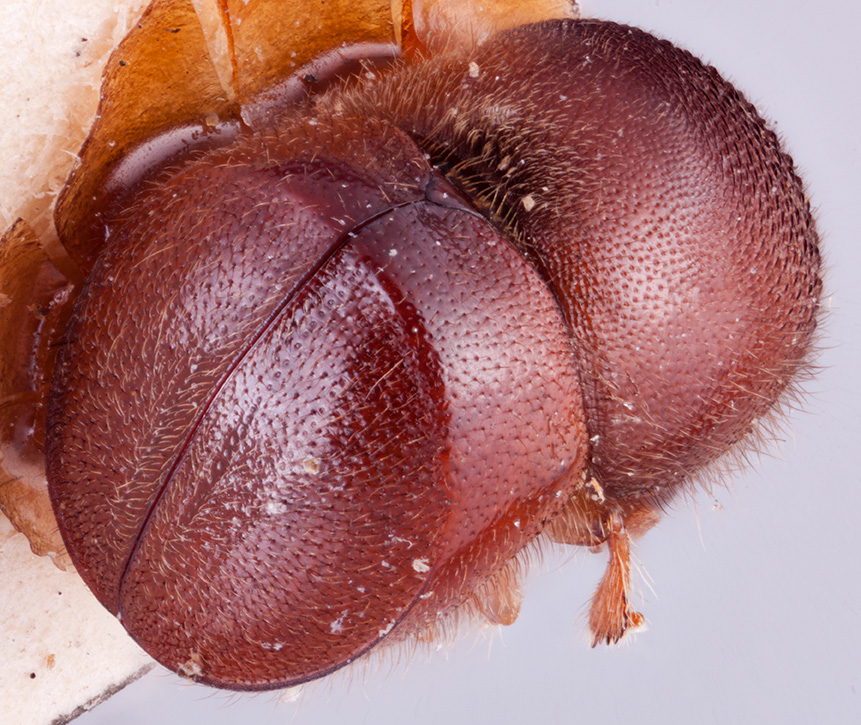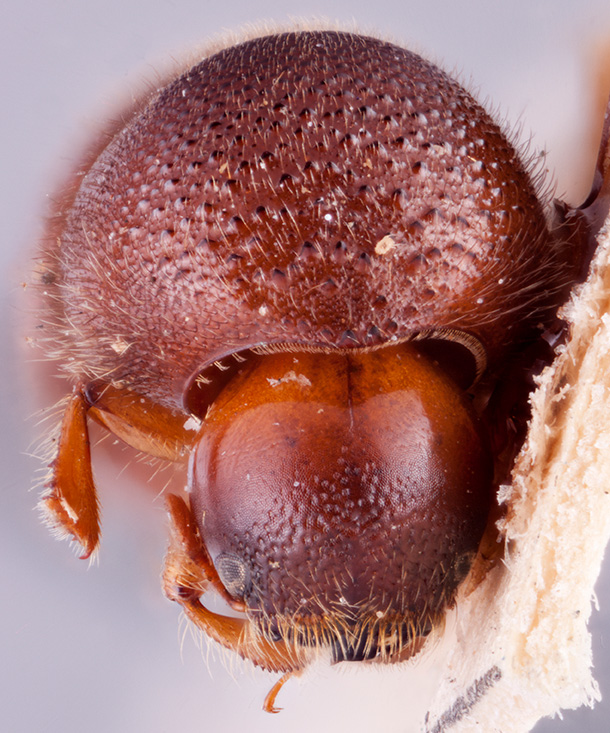Cnestus testudo
|
Cnestus testudo lateral; R.K. Osborn |
|
Cnestus testudo dorsal; R.K. Osborn |
|
Cnestus testudo declivity; R.K. Osborn |
|
Cnestus testudo frontal; R.K. Osborn |
Taxonomic history
Xyleborus testudo Eggers, 1939b: 116.
Xylosandrus testudo (Eggers): Wood and Bright, 1992: 801.
Cnestus testudo (Eggers): Dole and Cognato, 2010: 532.
Diagnosis
4.2−4.4 mm long (mean = 4.31 mm; n = 5); 1.54−1.62 times as long as wide. This species can be distinguished by the presence of a mesonotal mycangial tuftmycangial tuft:
tuft of setae that denotes the mycangia exterior opening
 on the pronotalpronotal:
on the pronotalpronotal:
pertaining to the pronotum
basebase:
point or edge closest to the body; opposite of apex ; elytralelytral:
; elytralelytral:
pertaining to the elytra
discdisc:
the flat central upper surface of any body part (e.g. pronotum and elytra) short, three times scutellumscutellum:
short, three times scutellumscutellum:
a shield-like sclerotized plate located at the midpoint of the elytral base
length; elytralelytral:
pertaining to the elytra
declivitydeclivity:
downward slope of either the pronotum or elytra
 obliquely truncatetruncate:
obliquely truncatetruncate:
appearing cut off or suddenly shortened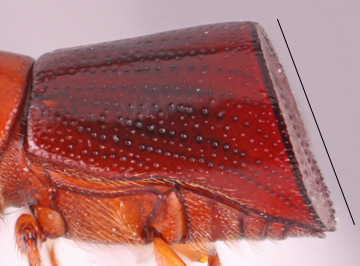 ; pronotumpronotum:
; pronotumpronotum:
the dorsal surface of the thorax
type 1 when viewed dorsally; antennalantennal:
pertaining to the antennae
club type 2, with two sutures visible on posteriorposterior:
toward the rear end; opposite of anterior
 face; antennalantennal:
face; antennalantennal:
pertaining to the antennae
funicle four-segmented; protibiaprotibia:
tibia of the first pair of legs
distinctly triangular; procoxae narrowly separated; posterolateralposterolateral:
relating to end of the side part/portion
 margin of elytraelytron:
margin of elytraelytron:
the two sclerotized forewings of beetles that protect and cover the flight wings
weakly carinate from apexapex:
point or edge furthest from the body; opposite of base
 to declivitaldeclivital:
to declivitaldeclivital:
pertaining to the elytral declivity
basebase:
point or edge closest to the body; opposite of apex along interstriaeinterstria:
along interstriaeinterstria:
longitudinal spaces along the elytra between the striae, which is not as<br />
impressed and bear smaller punctures.
 7; declivitaldeclivital:
7; declivitaldeclivital:
pertaining to the elytral declivity
interstriae granulategranulate:
pertaining to a coarse, grainy surface texture
 , setose with recumbentrecumbent:
, setose with recumbentrecumbent:
pertaining to setae that are flat against the cuticle
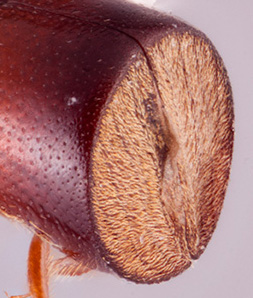 ground vestitureground vestiture:
ground vestitureground vestiture:
minute recumbent vestiture
and a median row of long, erecterect:
pertaining to setae that have their apices directed away from the body and appear straight
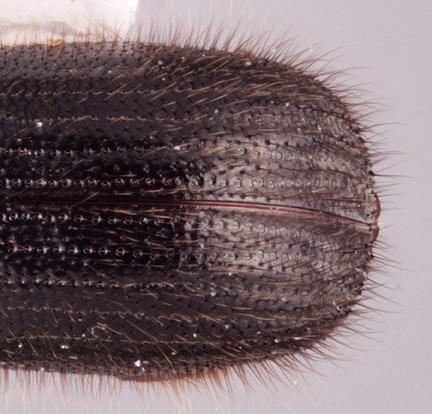 , hair-like setae; striaestria:
, hair-like setae; striaestria:
punctures in rows, which may or may not be impressed to make grooves 1 impressedimpressed:
1 impressedimpressed:
a depression in a surface
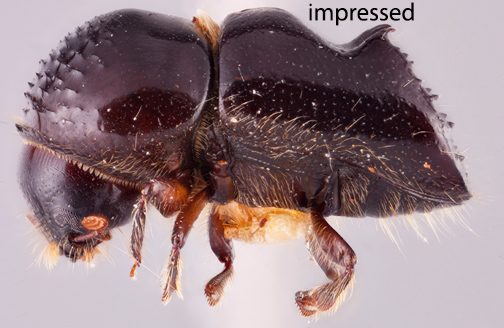 ; discaldiscal:
; discaldiscal:
pertaining to the disc of either the pronotum or elytra
punctures dense, confusedconfused:
of markings, having indefinite outlines or running together as lines or spots without definite pattern; usually referring to punctures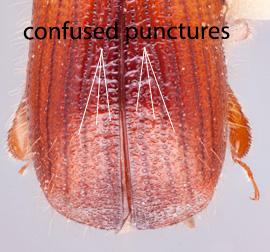 ; and uniformly pitch black or piceus-colored body with brown legs and antennaeantenna:
; and uniformly pitch black or piceus-colored body with brown legs and antennaeantenna:
paired segmental sensory appendages borne on each side of the head; comprised of (from proximal to distal) the scape, pedicel, funicle and club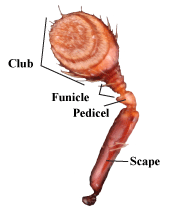 .
.
May be confused with
Cnestus gravidus, C. improcerus, and C. mutilatus
Distribution
China (Yunnan), Laos, Taiwan, Thailand, Vietnam
Host plants
unknown (Smith et al. 2020bSmith et al. 2020b:
Smith SM, Beaver RA, and Cognato AI. 2020b. A monograph of the Xyleborini (Coleoptera, Curculionidae, Scolytinae) of the Indochinese Peninsula (except Malaysia) and China. ZooKeys 983: 1-442. https://doi.org/10.3897/zookeys.983.52630)
DNA data
specimens not available for sequencing

